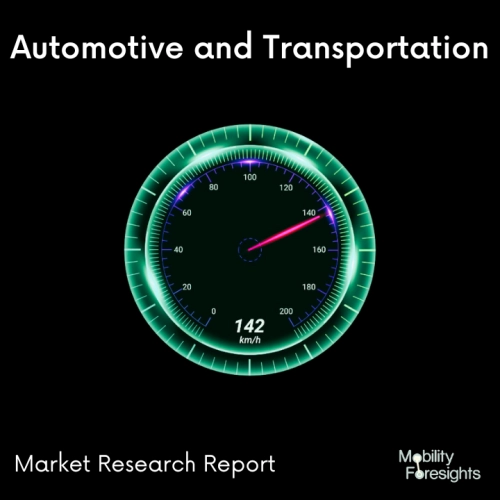
- Get in Touch with Us

Last Updated: Apr 25, 2025 | Study Period: 2023-2030
There are two categories of LED drivers: AC-DC LED drivers and DC-DC LED drivers. The AC power source for AC-DC LED drivers is a direct connection to the mains, but the DC power source for DC-DC LED drivers can come from either an AC to DC power supply or a DC input such a battery or a centralised power supply bus.
However, certain LED drivers can transform a DC voltage into a continuous current output. DC to DC LED drivers are what these are.A dependable power source is necessary for LED operation.
These LED lights are powered by drivers, which change alternating current (AC) into direct current (DC). By accounting for variations in the power supply, they guarantee that it is continuous and uninterrupted.

The Global Automotive DC-DC LED Driver market accounted for $XX Billion in 2022 and is anticipated to reach $XX Billion by 2030, registering a CAGR of XX% from 2023 to 2030.
Launch of LITIX, an LED driver IC for use in vehicle lighting, by Infineon LED lighting is incredibly popular due to features like minimal power consumption and a long lifespan.
Since LED stability is constantly increasing, they are able to adapt to the demanding circumstances of automotive applications, which enables rapid growth of the use in the automotive sector. give them more information on the development trend of LED drivers and the newest LED driver IC family from Infineon.
Infineon is the global leader in switches for automotive lighting thanks to its years of development experience in the automotive lighting industry as well as its knowledge, application expertise, and technological innovation in the semiconductor industry.
Product families including PROFIT, SPOC, and SPIDER are examples of this. The newest line of automotive LED driver ICs from Infineon is called LITIX.
With the introduction of LITIX, Infineon has demonstrated that its key strengths in the semiconductor and automotive lighting industries can be applied to the development of LED drivers. Infineon is anticipated to continue to hold the top spot in the automobile exterior lighting industry by developing various LITIX subcategories.
The LED driver IC from Infineon, called LITIX, can meet the standards for quality set by lighting applications used in the automotive sector because it incorporates its extensive system expertise.
Application security is ensured by self-defence and diagnostic features. Accurate current control increases LITIX's stability. Infineon provides adaptable LED driver solutions through a variety of families; the four subcategories of LITIX Linear, Basic, Power, and PowerFlex are created to satisfy the needs of various applications.
| Sl no | Topic |
| 1 | Market Segmentation |
| 2 | Scope of the report |
| 3 | Abbreviations |
| 4 | Research Methodology |
| 5 | Executive Summary |
| 6 | Introdauction |
| 7 | Insights from Industry stakeholders |
| 8 | Cost breakdown of Product by sub-components and average profit margin |
| 9 | Disruptive innovation in theIndustry |
| 10 | Technology trends in the Industry |
| 11 | Consumer trends in the industry |
| 12 | Recent Production Milestones |
| 13 | Component Manufacturing in US, EU and China |
| 14 | COVID-19 impact on overall market |
| 15 | COVID-19 impact on Production of components |
| 16 | COVID-19 impact on Point of sale |
| 17 | Market Segmentation, Dynamics and Forecast by Geography, 2023-2030 |
| 18 | Market Segmentation, Dynamics and Forecast by Product Type, 2023-2030 |
| 19 | Market Segmentation, Dynamics and Forecast by Application, 2023-2030 |
| 20 | Market Segmentation, Dynamics and Forecast by End use, 2023-2030 |
| 21 | Product installation rate by OEM, 2023 |
| 22 | Incline/Decline in Average B-2-B selling price in past 5 years |
| 23 | Competition from substitute products |
| 24 | Gross margin and average profitability of suppliers |
| 25 | New product development in past 12 months |
| 26 | M&A in past 12 months |
| 27 | Growth strategy of leading players |
| 28 | Market share of vendors, 2023 |
| 29 | Company Profiles |
| 30 | Unmet needs and opportunity for new suppliers |
| 31 | Conclusion |
| 32 | Appendix |